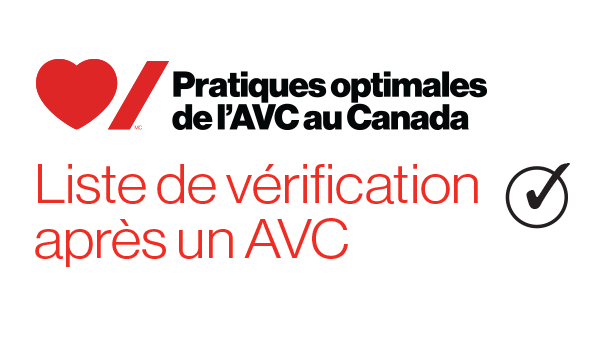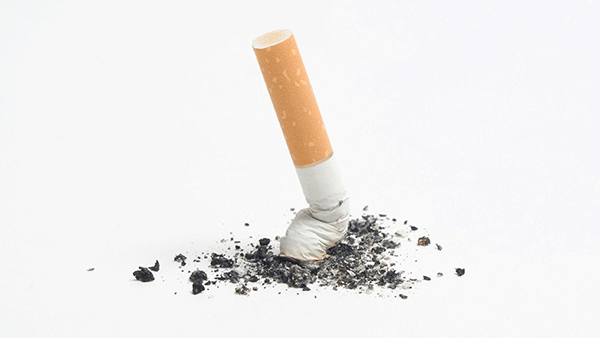- Définition et considérations
- 1. Évaluation initiale des besoins en matière de réadaptation post-AVC
- 2. Soins offerts dans les unités de réadaptation post-AVC
- 3. Prestation des soins de réadaptation post-AVC en milieu hospitalier
- 4. Réadaptation à domicile et en consultation externe post-AVC (y compris le congé précoce assisté)
- 5.1 Prise en charge des membres supérieurs après un AVC : principes généraux et traitements
- 5.2 Amplitude du mouvement et spasticité de l’épaule, du bras et de la main
- 5.3 Prise en charge de la douleur à l’épaule et du syndrome douloureux régional complexe (SDRC) après un AVC
- 6.1 Équilibre et mobilité
- 6.2 Spasticité des membres inférieurs après un AVC
- 6.3 Prévention et prise en charge des chutes
- 7. Évaluation et prise en charge de la dysphagie et de la malnutrition après un AVC
- 8. Réadaptation en cas de troubles de la perception visuelle
- 9. Prise en charge de la douleur centralisée
- 10. Réadaptation en vue d’améliorer la capacité à parler et à communiquer
- 11. Téléréadaptation après un AVC
Recommandations
- Un clinicien expérimenté devrait évaluer le risque de chute chez tous les patients ayant subi un AVC à leur admission, à tous les points de transition, après une chute et quand leur état de santé change [niveau de preuve C]. Voir l’annexe 2, au tableau 2 : Outils de dépistage et d’évaluation recommandés pour le risque de chute après un AVC. Voir la section 6.1, point C., pour des recommandations sur l’équilibre.
- Le dépistage du risque de chute doit déterminer les facteurs médicaux, fonctionnels, cognitifs et environnementaux qui influent sur le risque de chute et de blessures associées (p. ex., l’hypotension orthostatique, la déshydratation, la faiblesse musculaire et l’ostéoporose) [niveau de preuve B].
- Les personnes considérées comme étant à risque de faire une chute doivent subir une évaluation interdisciplinaire approfondie qui comprend les antécédents médicaux et fonctionnels et une évaluation de la mobilité, de la vision, de la perception, des capacités cognitives, de l’état cardiovasculaire et de l’environnement [niveau de preuve C].
- En fonction des résultats de l’évaluation du risque de chute, un plan de prévention devrait être élaboré et mis en œuvre pour chaque patient [niveau de preuve B].
- Le patient, sa famille et son aidant devraient être informés du risque accru de chute du patient et recevoir une liste de précautions à prendre pour réduire ce risque [niveau de preuve B].
- Le patient, sa famille et son aidant devraient recevoir une formation sur la façon d’effectuer un transfert et de mobiliser le patient en toute sécurité [niveau de preuve B]. Cette formation devrait également leur apprendre ce qu’il faut faire en cas de chute et comment se relever [niveau de preuve C].
- Le patient, sa famille et son aidant devraient recevoir une formation sur le matériel d’aide à la marche et les chaussures appropriés et sur la bonne façon d’effectuer un transfert et d’utiliser un fauteuil roulant qui tient compte de l’environnement de soins de santé et de l’environnement communautaire [niveau de preuve B].
- Des alarmes devraient être fournies aux lits et aux chaises pour les patients à risque élevé de chute, conformément aux protocoles locaux de prévention des chutes [niveau de preuve C].
- Si un patient chute, il faut évaluer s’il est blessé avant d’évaluer les circonstances entourant la chute afin d’identifier les facteurs précipitants. Les plans de prévention des chutes existants devraient être modifiés afin de réduire le risque d’autres chutes [niveau de preuve C].
Remarque : Pour connaître les stratégies de traitement des troubles liés au risque de chute (p. ex., faiblesse des jambes, troubles de l’équilibre, troubles visuels, troubles cognitifs, perte sensorielle), consultez les sujets appropriés du présent chapitre.
Les patients ayant subi un AVC présentent un risque plus élevé de chute que bien d’autres patients hospitalisés. Le taux d’incidence signalé est de 14 à 65 %. Les chutes surviennent souvent au cours de la première semaine suivant l’AVC, pendant la phase aiguë, puis de nouveau lorsque la mobilité du patient augmente. L’équipe interdisciplinaire de soins doit être attentive au risque de chute et veiller à ce que les évaluations et les interventions pertinentes soient effectuées.
Les personnes ayant subi un AVC soulignent l’importance d’adapter la formation et les stratégies de prévention et de prise en charge des chutes à chaque patient, car elles dépendent de leurs capacités. Elles ont aussi exprimé l’importance de systèmes d’alarmes ou de boutons d’urgence pour les chutes posant des risques pour le cou et les poignets, surtout pour les personnes atteintes d’aphasie ou d’apraxie. L’équilibre est un problème fréquent pour les personnes ayant subi un AVC. Elle devrait être évaluée pour chaque patient, même ceux qui ne présentent pas de difficultés évidentes d’équilibre.
Les organismes doivent adopter une stratégie de prévention et de prise en charge des chutes qui comprend:
- une formation régulière et continue du personnel dans tous les milieux hospitaliers sur l’évaluation du risque et les stratégies de prévention des chutes, y compris sur le transfert et la mobilisation des patients;
- l’utilisation d’un outil d’évaluation en vue d’une reconnaissance précoce du risque de chute;
- des instructions en matière de transferts et de mobilisation données à tout le personnel par les physiothérapeutes et les ergothérapeutes, et transmises aux patients et aux familles par des membres du personnel formés;
- des soins prodigués uniquement par des professionnels ayant suivi une formation leur permettant d’interagir avec des personnes éprouvant des difficultés à communiquer, comme celles atteintes d’aphasie, et d’utiliser des techniques de soutien à la conversation;
- la mise en place, dans chaque organisme, d’un processus uniformisé d’évaluation du risque de chute prenant en compte le délai des évaluations du risque de chute, les différents éléments et le besoin en matière de documentation;
- des précautions universelles relatives aux chutes dans tous les milieux offrant des soins à des patients ayant subi un AVC.
- Taux d’incidence de chutes chez les patients ayant subi un AVC admis à l’hôpital (en soins de courte durée ou en réadaptation).
- Pourcentage des patients qui sont tombés et qui ont subi des blessures dues à leur chute.
- Pourcentage des patients ayant subi une chute dont la durée du séjour à l’hôpital est prolongée en raison de leur chute.
Notes relatives à la mesure des indicateurs
- Les évaluations des chutes sont faites dans des documents distincts dans certains organismes et incluses dans les notes cliniques interprofessionnelles dans d’autres.
- Il se peut que les évaluations aient été effectuées malgré l’absence de documentation.
Renseignements destinés aux fournisseurs de soins de santé
- Tableau 1 : Outils de dépistage et d’évaluation pour la réadaptation post-AVC (en anglais)
- Tableau 2 : Outils de dépistage et d’évaluation recommandés pour le risque de chute après un AVC (en anglais)
- Lignes directrices de l’Association des infirmières et infirmiers autorisés de l’Ontario : Empêcher les chutes et réduire les blessures associées (Quatrième édition)
- L’échelle d’équilibre de Berg
- Test de la fonction en position assise
- Info AVC
Informations destinées aux personnes ayant subi un AVC, à leur famille et à leurs aidants
- Prendre en main son rétablissement : fiche d’information sur la réadaptation et le rétablissement
- Prendre en main son rétablissement : fiche d’information sur les transitions et la participation communautaire
- Aphasia Institute (en anglais seulement)
- Liste de contrôle post-AVC
- Le répertoire des services et ressources de Cœur + AVC
- Votre cheminement après un accident vasculaire cérébral : un guide à l’intention des survivants de l’AVC
- Réduire les risques de chute
- Info AVC
Lien vers les tableaux de données probantes et la liste des références (en Anglais)
The risk of falling is increased following stroke due to leg weakness, impaired balance, visual disturbances, functional dependence, cognitive impairment and sensory loss. During hospitalization for stroke rehabilitation, Teasell et al. (2002) reported that one third of patients of 238 patients admitted to a stroke rehabilitation unit sustained at least one fall during their stay and almost half of the fallers experienced at least 2 falls. Czernuszenko & Czlonkowska (2009) reported that during stroke rehabilitation, there were 252 falls that occurred in 189 (16.3%) patients. The incidence rate for any fall was 7.6 per 1,000 patient-days (95% CI 6.6–8.5). Almost two-thirds of falls occurred during the first two weeks after admission. Patients fell most often during transfers (34%), while sitting (21%) and during position changes such as going from a sitting to standing (13%). Most falls did not result in injury (72%), while minor injuries occurred in 27% of cases, with 1.2% resulting in serious injury (fracture).
Patients at highest risk of falling need to be identified as soon as possible so that appropriate preventative measures can be taken. However, there are few valid screening tools that exists. Breisinger et al. (2014) developed the Stroke Assessment of Fall Risk (SAFR) to identify patients at risk of falling during inpatient rehabilitation. SAFR is composed of 4 impairment items (impulsivity, hemi-neglect, static, and dynamic sitting balance) and 3 functional limitations items (lowest score on three FIM: transfers, problem solving, and memory), with possible scores ranging from 0 (low risk) to 49 (high risk). The area under the curve of the receiver operator curve was 0.73, which was significantly more accurate compared with a locally-developed, 3-item, non-stroke specific tool, which could identify the risk of fallers no better than chance. Nystrom & Hellstrom (2013) reported that higher scores on the Prediction of Falls in Rehabilitation Settings Tool (Predict FIRST), assessed during the first and forth day of admission to an acute stroke unit helped to predict falls that occurred during the next 6 weeks (OR=5.21, 95% CI 1.10 to 24.78, p=0.038). Predict FIRST is composed of 5 fall risk factors, each giving one point: male, central nervous system medications, a fall in the past year, frequent toileting, and inability to do tandem stance. The scale is cumulative (i.e. more risk factors give a higher risk of falling). Patients with a score of zero have a 2% chance of falling, while those with all 5 points have a 52% risk of falling during the inpatient rehabilitation period. Pinto et al. (2014) reported that longer time to complete The Timed Up and Go (TUG) test was predictive of falls among persons living in the community following a median of 13 months post stroke (OR=1.035, 95% CI 1.196 to 5.740, p=0.016). Fallers (n=56) took a median time of 18 seconds to complete the test compared with non fallers (n=94) at 14 seconds.
There have been very few RCTs conducted evaluating therapies to specifically designed to reduce the occurrence of falls following stroke, and of those, the evidence suggests that such interventions are not effective. Dean et al. (2012) randomized 151 community- based stroke patients to an intervention group that received exercise and task related training or control group that performed an upper-extremity strength training program and cognitive tasks. At 12-month follow up, although patients in the experimental group showed significantly improvement in gait speed, there was no significant difference between groups in the number of patients who fell. Batchelor et al. (2012) randomized 156 patients at high risk of falls into a tailored multifaceted falls prevention group or the control group which consisted of usual care. The falls prevention program consisted of an individualized home-based exercise program, falls risk strategies, education, and injury risk minimization strategies. There was no difference in the frequency of falls between groups. The intervention group had 1.89 falls/person-year, and the control group had 1.76 falls/person-year, incidence rate ratio=1.10, P=0.74). The proportion of fallers did not differ significantly between groups (risk ratio=0.83, 95% CI, 0.6-1.14), nor was the risk of injury between groups (incidence rate ratio=1.57, p=0.25). A Cochrane review (Verheyden et al. 2013) included 10 RCTs examining the effectiveness of interventions for preventing falls post stroke. There was no significant reduction in number of falls associated with exercise interventions in either the acute/subacute or chronic stages of stroke, or the number of fallers between the intervention and control groups in the chronic stage of stroke. Vitamin D was associated with declines in the number of falls in 2 trials (same group of authors).






